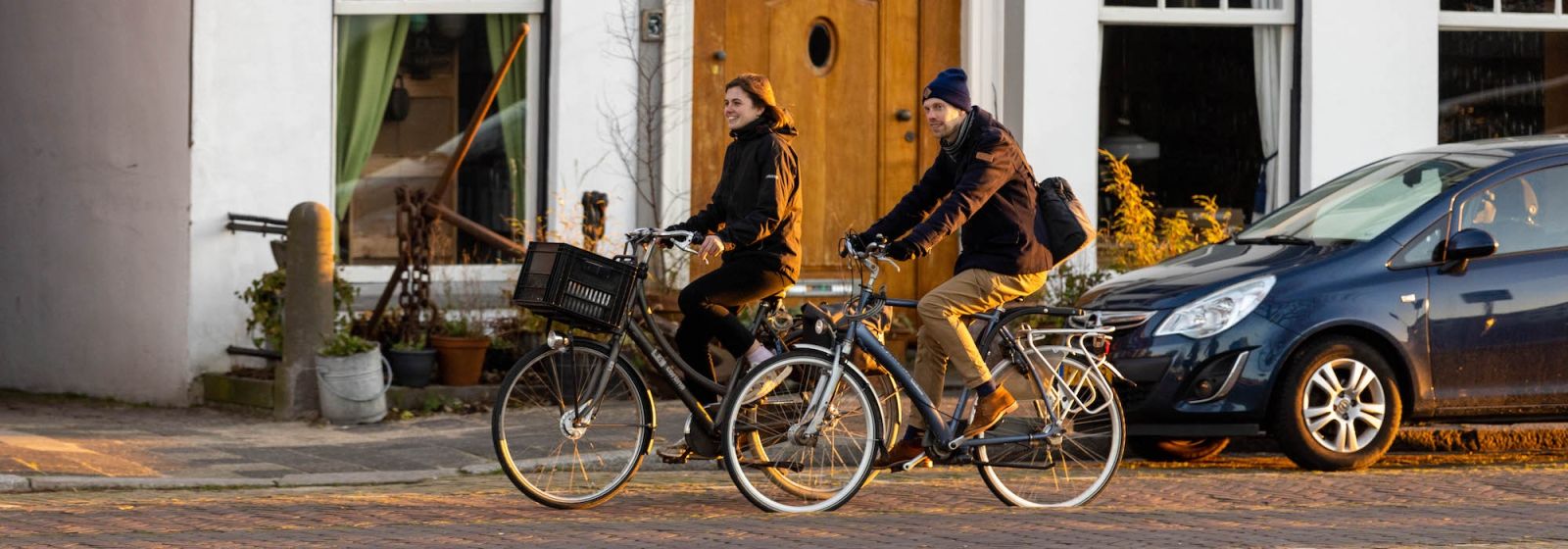
Cyclists' place on the road
Being a cyclist in the Netherlands, you need to adhere to the rules and regulations. These rules are often indicated by traffic signs. In road design, we pay special attention to the cyclists' position on the road, which differs based on the road type.
Cyclists are allowed to overtake stationary and moving motorised traffic on the right and left. For safety reasons it is recommended to overtake faster moving motorised traffic on the right side. It is allowed to cycle side by side with two cyclists, if they do not cause hindrance.
Distributor roads
On distributor roads a speed limit of 50 km per hour (30 miles per hour) applies. Because of the higher speeds or motorized traffic cyclists have separate infrastructure. This can be cycle lanes on the road, separated with a interrupted line, or cycle paths physically separated from the road. If necessary, cyclists may leave the bicycle lane with a interrupted line. This is not expedient with a continuous line. Unfortunately, that is occasionally necessary if the cycle path is blocked by a stationary or incorrectly parked car. Always look back first and clearly state your intentions by holding out your hand.
Local roads
Local roads inside the urban area are marked as 30 km zones. They are marked by the ‘zone 30’ traffic sign. It indicates that the maximum speed in this area is 30 km per hour (20 miles per hour). The 30km per hour limit is not only applied to this road, but to the whole area covered between this sign and the sign indicating its end: 'end 30 zone'.
Since the speed of the motorised traffic is low, it is safe to share the road with cyclists. Most of the time, there are no separate bicycle lanes or paths in these zones. Cyclists must keep to the right as much as possible. Most crossings in the 30km zone are crossings without traffic signs, so you must stop for all road users approaching you from the right.
Woonerf
A special type of local road is the woonerf, where a speed limit of 15 km per hours (10 miles per hour) applies. A woonerf is indicated with an ‘erf’ traffic sign. Pedestrians may use the entire width of the road to walk and play in. When cycling in a woonerf pay extra attention to your surroundings, try to make eye contact and clearly state your intentions by holding out your hand.
Scenarios
Please have a look at some correct and incorrect situations presented below to better understand the cyclists' position on the road in different situations. Click "next" on the bottom of this page to go to the next example.
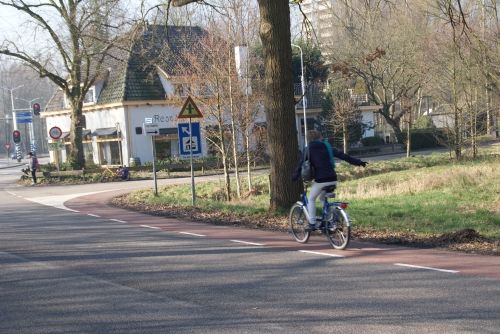
Correct
The basic rule is: cycle on the right-hand side of the road.
Wageningen has cycle tracks with two-way traffic. You can recognize them by the specific traffic sign and the white interrupted marking lines separating the two directions.
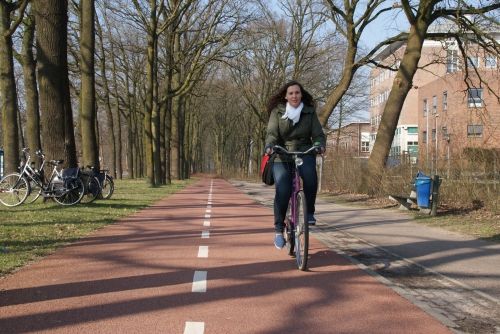
Incorrect
Do not cycle on the left.
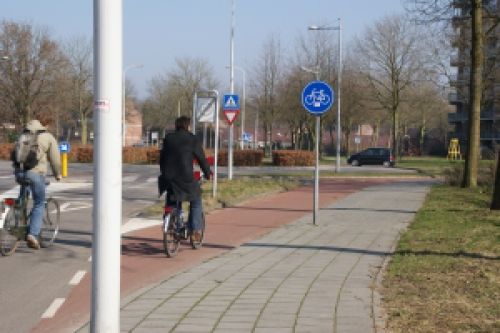
Correct
A cycle path is easy to recognise, as it is marked by a traffic sign. Cycle paths in the Netherlands are often painted red.
Compulsory cycle lane
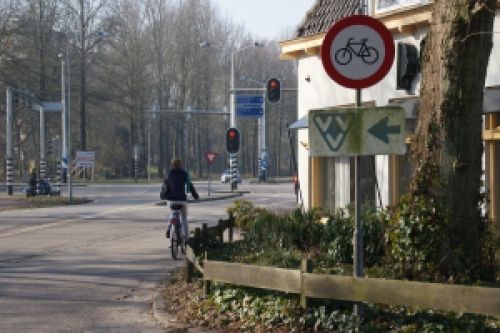
Incorrect
Do not cycle on the road. (Indicated by the traffic sign).
No access for bicycles or for non-motor-powered invalid carriages
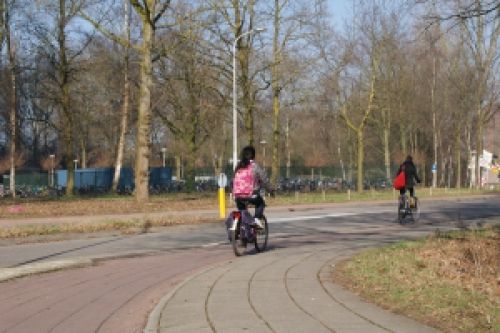
Correct
Follow the rules, cycle on the cycle path.
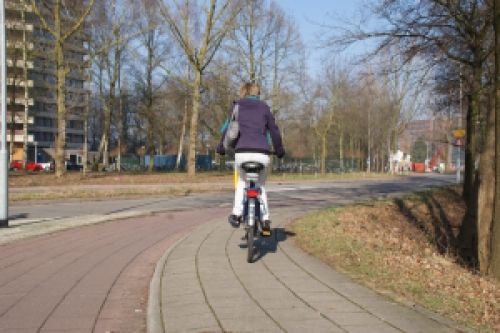
Incorrect
Do not cycle on the pavement.
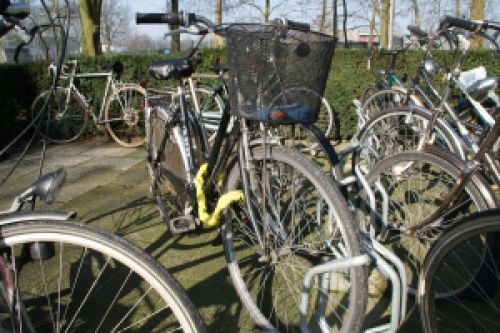
Correct
Put you bicycle in the frame.
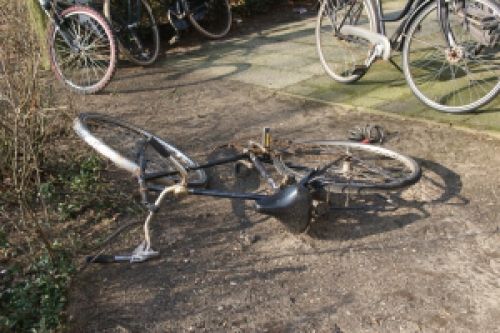
Incorrect
Do not park your bicycle alongside the road.